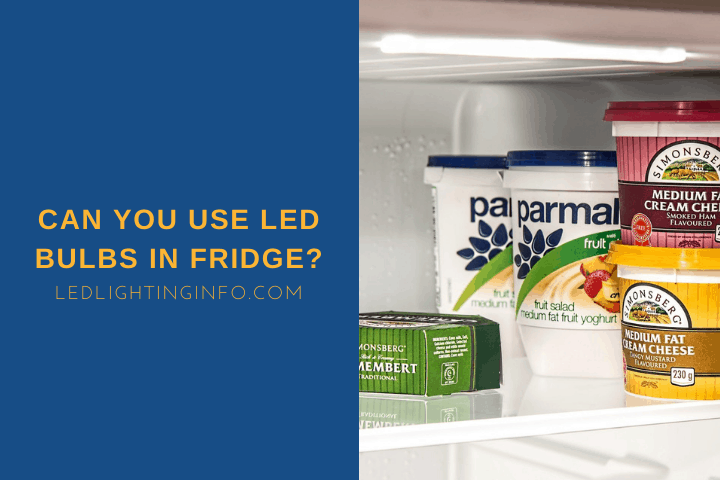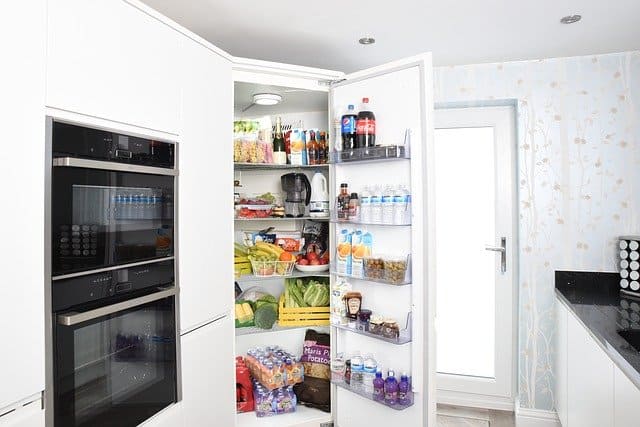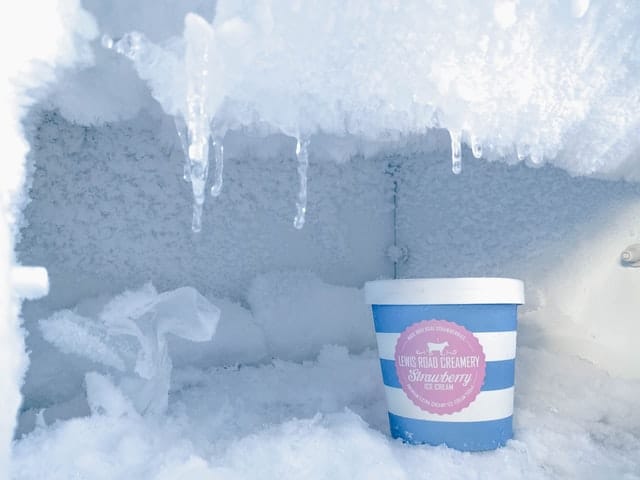Whenever you replace a bulb in your home, everyone seems to be recommending LEDs these days.
But can they be used in fridges?
Surely the cold temperatures will cause them to break or become inefficient?
Or perhaps your fridge is so old that it’s not even compatible with LEDs?
Stop panicking; I want to answer all of these questions and more!
Using LED bulbs in fridges is possible and is very commonly done when replacing old, outdated incandescent bulbs. Be sure to get the correct base size, which will likely be E14, and ensure that the bulb’s shape fits well into the designated space.
In the below post I will talk about:
- The key benefits of using LEDs over incandescent lights
- How to select a suitable LED for your fridge
- Whether or not LEDs can be used in freezers as well
Let’s get stuck in!
Can You Use an LED Bulb In a Low Temperature Fridge?
One of the reasons I am so LED obsessed is because of how versatile they can be.
But one crucial piece of advice with LEDs is to avoid putting them in areas where they will be exposed to very high levels of heat.
So luckily for you, putting them in a fridge is undoubtedly not a problem!
In fact, colder temperatures are actually suitable for LEDs, so it’s a smart idea to swap out your dull old incandescent light for an LED.
It’s also worth mentioning all the other benefits on offer when switching out your fridge light for an LED.
“Like what?”
Glad you asked …
Why Are LEDs Better Than Traditional Incandescent Bulbs In Fridge?
First up, you may already be aware that LEDs emit some heat. Gone are the days of reaching for the bedside lamp at night time and burning yourself.
I’m sure we all remember that!
Instead, LEDs kick out far less heat, which is massively beneficial in an environment where staying cold is essential.
Even if you accidentally leave your fridge door open, the light won’t warm up and affect any food close by, making them safer in this regard.
Secondly, LEDs are much more efficient and energy-saving than the sorts of bulbs that appeared in older refrigerators.
Sure, you won’t save a fortune on your energy bills, but it’s nice to know that all aspects of your home are as eco-friendly as possible.
The third major benefit worth noting is how much more appealing LEDs are. Old fashioned incandescent fridge lights tend to emit a dank and unwelcoming yellow glow.
On the flip side, LEDs can have a warm, pleasant glow that quickly brightens up your fridge.
So much so that simply replacing the bulbs in your fridge with LEDs can immediately make it feel 10 years newer!
Related: Can LED Bulbs Be Used In Ovens?
What To Check Before Purchasing An LED Bulb For Fridge
Older or cheaper fridges often just have standard incandescent bulbs in them. They can be replaced pretty quickly with a new LED, as long as you follow a few basic tips.
Make sure it is the correct size – “duh?”
I know right, sorry to state the obvious, but you’d be surprised how easy it is to choose the wrong bulb.
Size-wise, ensure two things – firstly, that the fitting itself is correct, and secondly, the size of this fitting is the same.
Most fridge bulbs are E14 diameter (Amazon), but not all so check the manual, or better take a picture of the bulb and ask the retailer for help.
Make sure the bulb is the correct shape
Think carefully here about the space available for your fridge’s new LED light.
Which way do you want the light to be directed?
It’s perfectly fine to use a bulb that is a different shape from your old one. Just ensure that too much doesn’t hang out into the usable space of the fridge.
If it does, you may find that it gets caught a lot and will eventually break.
Ensure the bulb has a protective plastic case
There is always the risk of getting an electric shock when brushing past LEDs with poor quality connections.
Especially in tight spaces such as a fridge. A solid plastic case around the actual LEDs will prevent this.
Can LEDs Be Used In Freezers?
It would be hard to find an LED that won’t last well in a refrigerator, whose operating temperature would usually be around 4 degrees Celsius.
However, freezers are usually around -14 degrees Celsius, which you may worry will cause issues over time.
The good news is, many LEDs claim to be operational up to -41 degrees Celsius and to do so with the same light output. So it is perfectly normal to use LEDs in freezers.
My top recommendation is to purchase an LED specifically designed for use in both refrigerators and freezers.
Luckily, there are manufacturers out there who specialise in producing exactly this. So you should be able to find one to fit the design of your freezer.
Do Fridge Bulbs Need To Have a Special Appliance Rating?
Following on from this point, do you honestly NEED to purchase a light bulb designed explicitly for fridges and freezers?
Do they need a special appliance rating?
Well, there honestly is no hard and fast rule; and sure, so long as it fits, you could use a standard LED in your refrigerator.
However, you could run into some issues, namely:
- It is not purpose-designed, so sticks out into the usable area of the fridge
- The LEDs are not properly sealed off; meaning that it’s a safety risk if you were to brush past a bad connection with your hand
- They are not shatterproof. If you were to knock the bulb quite hard when putting groceries away, this could lead to a lot of mess in your fridge and the need to buy yet another bulb
It’s like purchasing replacement parts for any appliance in your home. Your best bet will usually be to go with a bulb recommended by the supplier and purpose-built for the job.
Also read: Can You Use LED Bulbs In Range Hood?
Why Are These Special Bulbs More Expensive?
It all comes down to supply and demand. Standard LEDs are mass-produced thousands at a time and sold in stores all around the world.
However, appliance rated fridge/freezer LED bulbs have been custom made for the task at hand and have a much lower level of demand.
They will never be used for the task other than which they were made, so they are harder to find. This naturally generates a premium in its price.
However, one of the wonderful things about LED bulbs is that they can theoretically last for more than a decade before needing replacement.
Far longer than the broken incandescent bulb that brought you to this article in the first place.
So even though you pay a little more for it, it is unlikely you will need to buy another one.
You will likely find that your refrigerator itself breaks down long before the bulb does!
Final thoughts
Switching out existing refrigerator lights for LEDs is not only safe and easy to do, but it’s also the smart thing to do. Offering you cost savings over time, as well as a more eco-friendly and modern-looking fridge.
Now over to you.
Have you recently fitted an LED bulb in your fridge?
Or maybe you want me to check a bulb you are thinking of buying?
Drop a comment below and let me know your thoughts.
Looking for an LED bulb but not sure what type you need?
Check out my free bulb picker and select the right bulb within few clicks.





